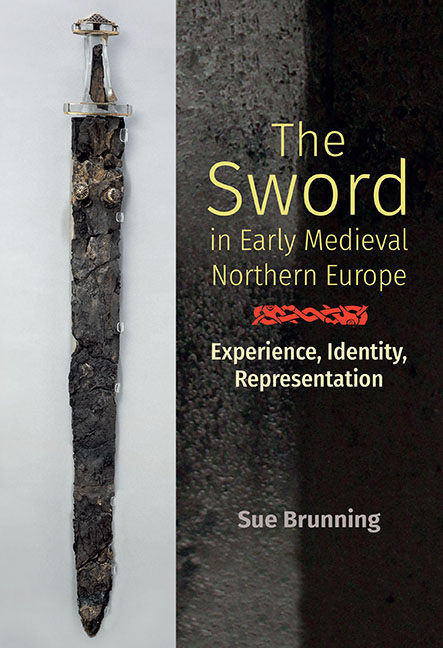Summary
A diverse array of texts survive from Anglo-Saxon England, encompassing histories, chronicles, poetry, inscriptions, letters, religious texts, laws, charters and wills, composed in Latin and vernacular languages and written in the runic and Roman alphabets. Surprisingly few contain detailed references to swords. The great exception is vernacular poetry. Old English verse bristles with swords, narrating not only their use in battle but also who made and owned them, how they circulated and even their names and temperaments. It is matched in this by Scandinavian vernacular poetry, composed in Old Norse. Accordingly, these sources form the natural focus for this chapter.
Old English poems are preserved in a group of mid-tenth- to eleventh- century manuscripts but contain elements of older tales and ideas transmitted orally over generations: part of Genesis has been attributed to the early eighth century while some experts place Beowulf's roots in the seventh century, predating the manuscript in which it survives by more than three hundred years. Poems recounting traditional tales could contain even older material, albeit subject to a degree of corruption, adaptation and reconstruction. Old Norse ‘skaldic’ poetry, named after the ‘skalds’ (poets) who composed it, is preserved in medieval Icelandic sagas but is widely attributed to the late tenth to eleventh centuries, with some poems thought to be older still. Skaldic poems are so intricate in form and metre that experts believe they were transmitted uncorrupted from the Viking period – it was too difficult to modify them. Their veracity is supported further by the fact that many can be linked to named, dated skalds and were composed and recited publicly to honour a named individual's deeds on a specific, dated occasion. This, together with its dense martial imagery, makes skaldic poetry an invaluable source for Scandinavian views about swords, and one rarely exploited beyond specialist studies due to its complexity. This chapter is based on analysis of all relevant Old English poems, and Old Norse poems by skalds dated to the ninth to eleventh centuries who are named in Konungasǫgur (‘Kings’ Sagas’), the type of sagas that experts believe are likeliest to be genuine early medieval compositions.
- Type
- Chapter
- Information
- The Sword in Early Medieval Northern EuropeExperience, Identity, Representation, pp. 111 - 138Publisher: Boydell & BrewerPrint publication year: 2019



